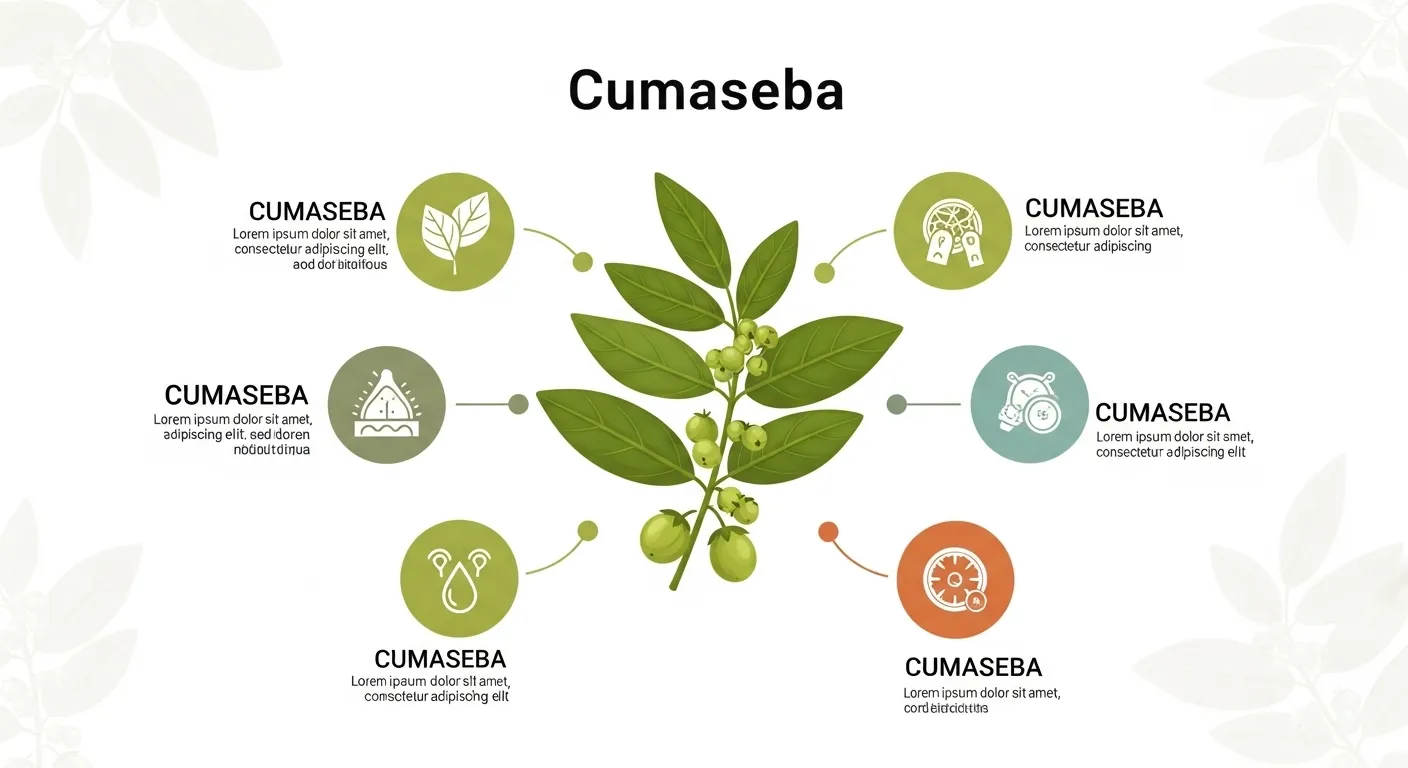Table of Contents
Introduction
I often hear people ask about natural remedies that come straight from the rainforest, and one of the plants that always comes up is health benefits of cumaseba. This tree has been used for centuries in South America for its healing properties, yet many outside those regions barely know its name. When we take a closer look, we find that cumaseba offers surprising benefits for both body and mind.
A Tree With a Healing Reputation
We first need to understand that cumaseba isn’t just a tree; it is considered a natural pharmacy by many Amazonian communities. They have relied on its bark and extracts for generations to treat infections, inflammation, and even blood disorders. This shows how powerful and trusted this plant is in traditional medicine.
Support for the Body’s Natural Defense
I like to think about how our bodies fight daily battles against germs. Cumaseba plays a role here because people believe it strengthens the immune system. When your body has more support, it responds better to colds, flu, or lingering infections. Some even use it as a natural preventive measure before sickness strikes.
Relief From Pain and Swelling
We all know how uncomfortable joint pain or muscle soreness can be. Many turn to cumaseba for its anti-inflammatory properties. Traditional healers often brew the bark into teas or create extracts that soothe conditions like arthritis. This makes it an appealing option for those who want natural pain relief instead of heavy medications.
A Natural Tonic for the Blood
They also say that cumaseba has benefits for blood health. In the Amazon, it is sometimes referred to as “blood cleanser.” Communities use it to improve circulation and support healthy red blood cells. While research is still catching up, these traditions suggest its compounds may help the body filter toxins and maintain balance.
Benefits for Digestive Comfort
We sometimes forget how important our digestion is until something goes wrong. Cumaseba has been used as a gentle aid for stomach issues like bloating, cramps, or indigestion. People prepare it in teas or infusions that calm the stomach and help food move more smoothly.
Potential Antimicrobial Power
I find it fascinating that plants have built-in defenses against bacteria and fungi. Cumaseba is no different. Some studies suggest it may have antimicrobial properties, which explains why Amazonian tribes use it for wounds, skin infections, or even urinary issues. It works as a natural barrier, reducing the growth of harmful microbes.
Helping the Liver Do Its Job
We all rely on the liver to keep the body clean, and cumaseba is thought to act as a supportive herb for this vital organ. Traditional use shows it being taken to flush out impurities and restore liver health after illness. For people dealing with fatigue or toxin buildup, this plant has been an important go-to remedy.
Emotional and Mental Well-Being
These days, we cannot ignore the connection between the body and mind. Some traditional practices suggest cumaseba also helps calm anxiety and mental stress. Drinking it as tea is said to bring not only physical relief but also a sense of balance, which helps people feel emotionally stronger.
Ways People Traditionally Use It
Here are some of the most common ways communities prepare cumaseba:
- Tea or infusion: Bark boiled in water for daily drinking.
- Extracts or tinctures: Concentrated forms used in smaller amounts.
- Topical applications: Applied directly to the skin for wounds or swelling.
- Powders or capsules: Modern supplements found in natural health stores.
Things to Keep in Mind Before Using
We need to remember that natural remedies can be powerful. While cumaseba offers many benefits, it should not replace medical treatment. Some people may experience side effects or interactions with other medicines. It’s always best to talk to a healthcare professional before starting any new herbal routine.
Modern Interest and Scientific Research
These days, more researchers are curious about the healing power of plants. Cumaseba is now being studied for its antioxidants and natural compounds. While traditional knowledge is strong, science is still working to confirm its effectiveness and safety for broader use. This blend of history and research makes cumaseba even more interesting.
Connection to Traditional Amazonian Knowledge
We must not forget the source of this wisdom. Cumaseba has been used for hundreds of years by indigenous communities who know the rainforest intimately. Their knowledge guides today’s interest in natural medicine, reminding us that healing often begins in nature.
Why People Are Turning Back to It
I notice more people choosing herbal remedies over synthetic drugs. Cumaseba fits well in this movement because it represents a bridge between ancient practices and modern wellness. People want natural options that work with the body rather than against it, and this plant offers that possibility.
How It Fits Into Everyday Wellness
They often wonder, how can something like cumaseba be used in daily life? Some take it in capsule form as a supplement, while others prefer a warm cup of tea in the evening. Its flexibility makes it easy to add into wellness routines for those seeking natural support.
Comparing With Other Herbal Remedies
We see that cumaseba shares traits with herbs like turmeric or ginger. All three help with inflammation and immunity. What makes cumaseba unique is its deep Amazonian roots and specific use for blood health, something less common in other herbs.
What the Future May Hold
These next years could bring exciting developments for cumaseba. As science continues to analyze its compounds, we may see more herbal products available worldwide. This could lead to wider acceptance of what indigenous people already knew about its benefits.
Final Thoughts
I believe cumaseba represents the perfect example of how traditional wisdom and modern curiosity can meet. It offers benefits for the immune system, digestion, circulation, and emotional well-being. While research is ongoing, its long history of use speaks for itself.
We should see it not only as a plant but as a reminder that nature still holds powerful answers for our health. If you are curious about natural remedies, learning about cumaseba is a step toward exploring what the rainforest has been offering all along.




